

GUIDE FOR SUPERVISING DRIVER
GUIDE FOR SUPERVISING DRIVER
- HOME > GUIDE FOR SUPERVISING DRIVER
GUIDE FOR SUPERVISING DRIVER
- HOME > GUIDE FOR SUPERVISING DRIVER
Most learners in Victoria will need to get at least 120 hours of supervised driving experience to apply for a probationary licence. This gives them a chance to develop safer driving skills gradually. Victoria has a Graduated Licensing System that provides new drivers with a structured transition to full driving as their experience and maturity increase. The new system aims to help:
- Prepare new drivers for the demands of solo driving through extended learning.
- Protect probationary drivers by keeping them out of high risk driving situations.
- Motivate probationary drivers to adopt safe driving behaviours and to drive within the law.
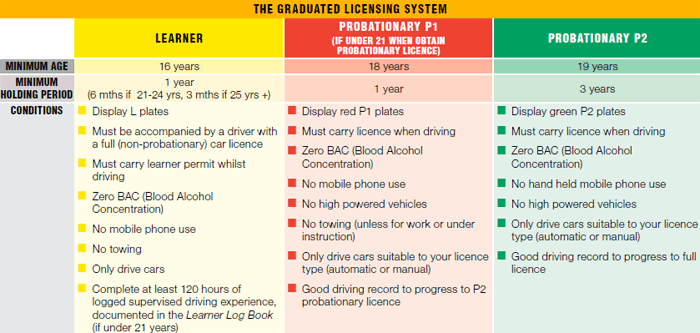
You should divide the learner period into four stages:
STAGE 1 is all about controlling the car. It’s the shortest stage and aims to get your learner to start, stop and steer safely in quiet areas without traffic.
STAGE 2 is about applying new car control skills and looking out for other road users on quiet roads with little traffic.
STAGE 3 takes longer and uses the Stage 1 and Stage 2 skills on busier roads and in more difficult driving situations. Now the learner starts becoming a real driver. They learn to deal with traffic and other hazards to become safer in varied driving situations.
STAGE 4 also takes a long time and can be the longest stage. It involves the learner driving as if they’re a solo driver. They still have L plates on the car and a supervising driver beside them, but they’ll learn to make most of the driving decisions without your help. The aim is to build up lots of different experiences where they act like a solo driver.
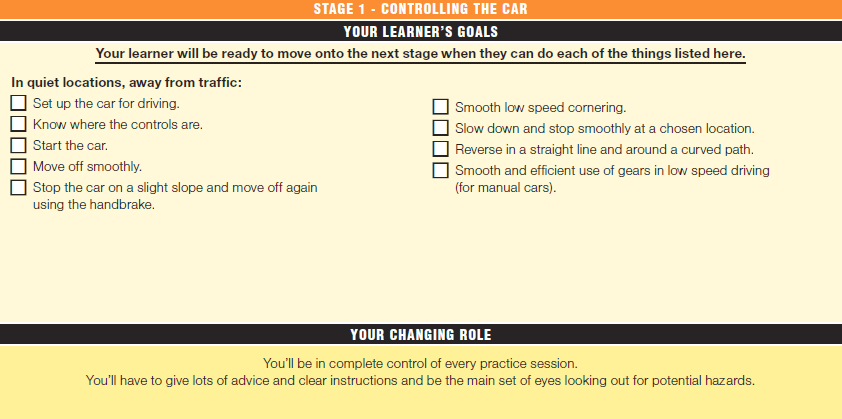
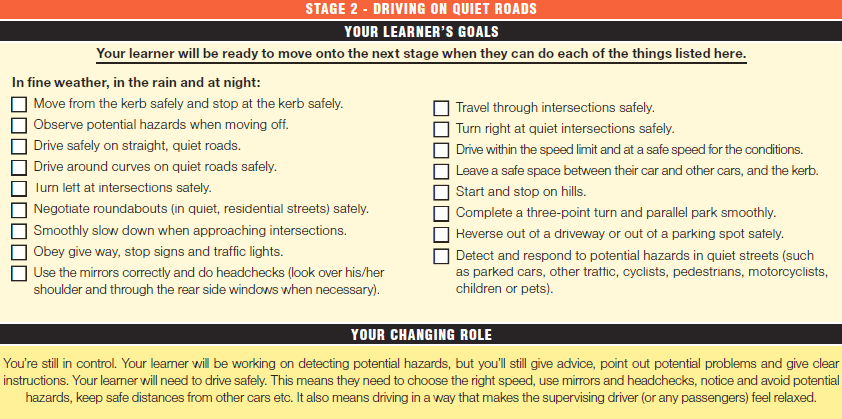
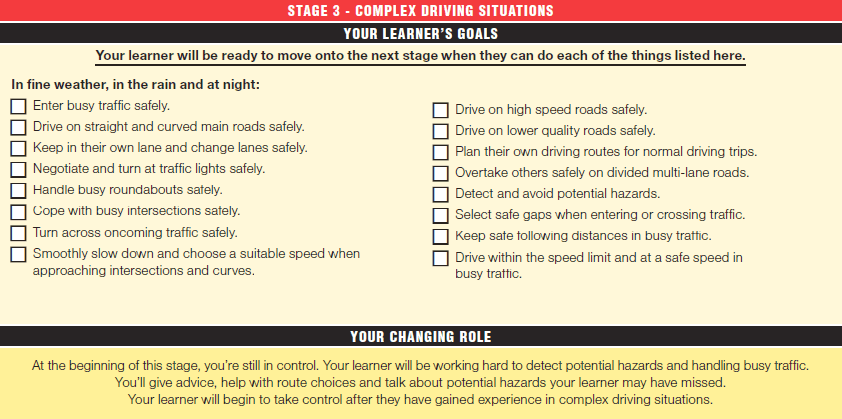
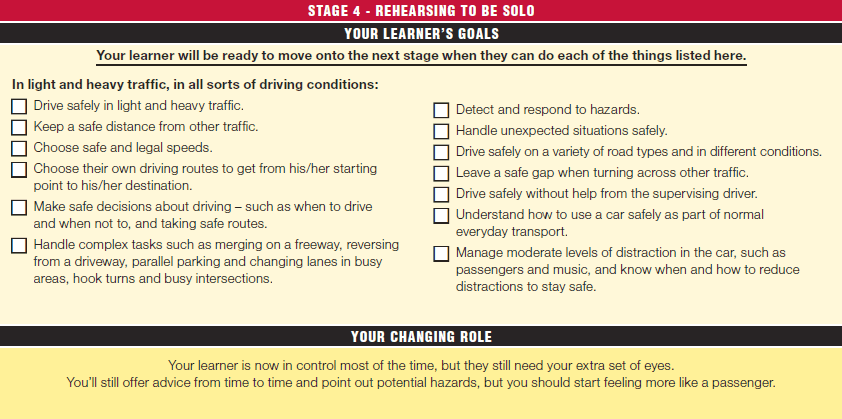
Many supervising drivers get anxious about their role and it can be quite stressful sitting as a passenger in your own car with a beginner driver in control. A bit of stress is perfectly normal. It can help you stay alert and aware of what’s going on in and around the car. Too much stress during your driving sessions is bad. You can reduce the stress levels and help make the experience positive. Stress builds up partly because of how you think about problems.
• You can talk yourself into being more stressed with thoughts such as ‘I can’t stand this’, ‘That was awful’ or ‘What a stupid mistake’.
• You can reduce your own stress by changing this type of thinking. Instead, tell yourself ‘I can cope with this’, ‘That was a silly mistake but that’s how people learn’ and so on.
• You’ll never stop the stress or concern entirely (and you should always stay alert), but it’s much easier to cope when you’re less stressed.
• Avoid driving sessions when either of you feels tired or hassled. Don’t have a session if you’ve just had an argument with your learner.
• It’s risky driving when you’re stressed or tired, and it’s good to teach your learner you need to be calm to drive safely.
More points to consider:
• If the drive does get stressful, stop the car and let things cool down a bit. If necessary, take over the driving task.
• Plan driving routes together so they match your learner’s ability and experience. Resist hurrying things up by moving into traffic too soon.
• If you or your learner feel uncomfortable with a new driving situation, go back a step or two for more practice before trying again.
• Let yourself get used to your new role and to being your learner’s passenger.
• Consider going for a drive with your learner and a professional driving instructor. Instructors are experienced at teaching people how to drive and can offer useful advice. Some driving schools offer discounts or free lessons if a parent attends a lesson with a learner.
If you have any questions or want to learn more, contact us here.


